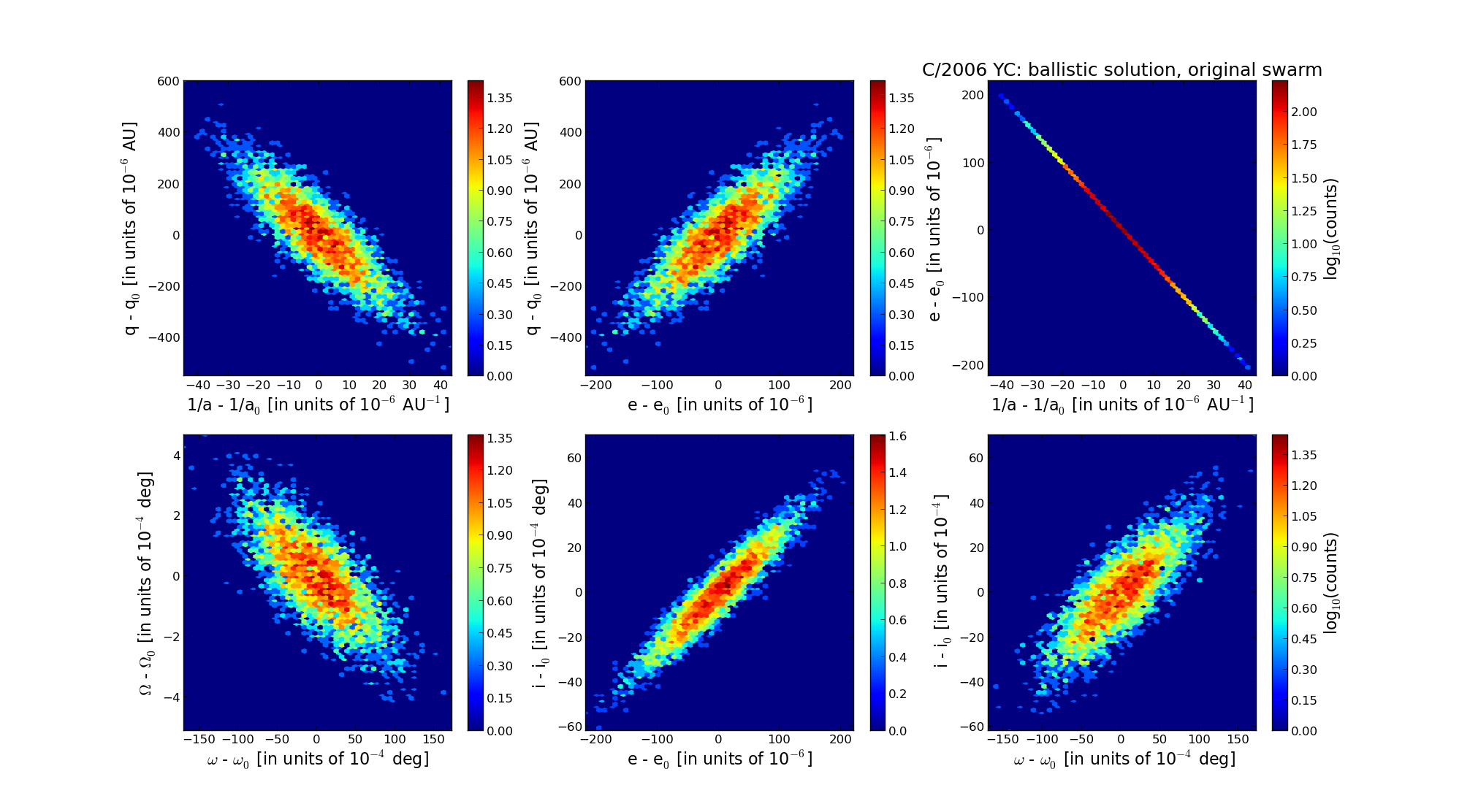| Solar System Dynamics & Planetology Group |
 |
C/2006 YC Catalina–Christensen |  |
| Solar System Dynamics & Planetology Group |
 |
C/2006 YC Catalina–Christensen |  |
| number of observations | 147 |
| number of residuals | 286 |
| data interval | 2006 Dec. 16 — 2007 Apr. 15 |
| rms [arcsec] | 0.42 |
| orbit quality class | 2a |
| Epoch (TT) | 20060922.0 | = JD 2454000.5 |
| time of perihelion passage (TT) | 20060911.776952 | ± 0.031475 |
| perihelion distance | 4.94821307 | ± 0.00013935 |
| eccentricity | 1.00023183 | ± 0.00006089 |
| argument of perihelion [deg] | 335.518236 | ± 0.004348 |
| longitude of the ascending node [deg] | 154.288752 | ± 0.000125 |
| inclination [deg] | 69.558721 | ± 0.001653 |
| inverse semimajor axis [10-6 au-1] | -46.85 | ± 12.30 |

| Epoch (TT) | 17010305 | |
| time of perihelion passage (TT) | 20060911.372759 | ± 0.031507 |
| perihelion distance | 4.94671296 | ± 0.00013762 |
| eccentricity | 0.99977378 | ± 0.00005955 |
| argument of perihelion [deg] | 335.521538 | ± 0.004357 |
| longitude of the ascending node [deg] | 154.250213 | ± 0.000123 |
| inclination [deg] | 69.543022 | ± 0.001630 |
| inverse semimajor axis [10-6 au-1] | 45.73 | ± 12.04 |
| Epoch (TT) | 23161226 | |
| time of perihelion passage (TT) | 20060911.244477 | ± 0.031483 |
| perihelion distance | 4.94218283 | ± 0.00013842 |
| eccentricity | 0.99783934 | ± 0.00005959 |
| argument of perihelion [deg] | 335.365069 | ± 0.004359 |
| longitude of the ascending node [deg] | 154.232162 | ± 0.000120 |
| inclination [deg] | 69.573037 | ± 0.001628 |
| inverse semimajor axis [10-6 au-1] | 437.19 | ± 12.07 |